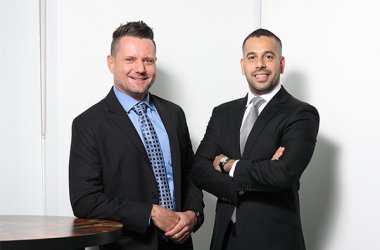
There are now at least three companies moving enterprise Wi-Fi control functions, management functions or both into the cloud.
Meraki was first to announce the hosted Wi-Fi control and management model for midmarket enterprises in May with the Meraki Enterprise Wireless LAN System. This month, Aerohive said it was making its wireless LAN management tools available in the form of a software-as-a-service (SaaS) called Aerohive HiveManager Online. That announcement was followed quickly by Aruba Networks’ AirWave division, which announced a SaaS called AirWave OnDemand, slated to be available in December.
Coupled with new 802.11n dual-radio access points (AP) hovering around the $700 mark, the moves could help get the ball rolling with 802.11n deployments in budget-conscious companies. They are also intended to entice integrators, resellers and carriers to use the platforms to deploy managed Wi-Fi services to enterprises, hotels, campuses and multitenant units.
Alone, the offerings from Meraki, Aerohive and Aruba’s AirWave division are not managed services, but, rather, hosted services. They move management servers and appliances (and in Meraki’s case, WLAN controllers) into the cloud so that you don’t have to house, administer and update them. But a third party could build a full-blown managed service on top of the platforms.
Both Meraki and Aerohive have removed the controller CPE requirement at enterprise sites, albeit in different ways. While Meraki has placed the control and management functions in the cloud, Aerohive had already done away with the controller by bundling control functions into its distributed HiveAP "cooperative control" APs in its initial architecture.
Now, Aerohive has moved its HiveManager appliance into the cloud to unburden companies that don’t want to deal with it on site. But the company will continue to offer the HiveManager appliance CPE, as well as new VMware-based "virtual appliance" server software option, for those who do.
In Aruba’s case, the setup still requires on-premises controllers where enterprises have thin-AP/controller systems installed. The AirWave management tools can be used with 15 enterprise-class WLANs (both the older fat APs and newer thin APs/controllers) and thus relies on the respective vendors’ controllers to control their own APs in those architectures.
AP prices are also sweetening the pot for the midmarket. Along with HiveManager Online, Aerohive launched the AP-120, a $689 2×2 dual-radio 802.11abgn AP. Meraki’s comparable MR14 lists for $799, and Aruba’s recently announced, comparable AP-105 is $695. (Trapeze Networks also announced the $745 MP-82 AP last spring.)
These products compare to some higher-end dual-radio 802.11n-capable systems, both from these companies and others, that list for $995 to $1,499. The higher-end devices sport more antennas, a second gigabit Ethernet port and other goodies.
Only Meraki and Aerohive have made cloud service pricing available, and they are neck and neck. For a 30-AP setup, Meraki would sell you the APs for $23,970 ($799 each) and cloud controller/management software licenses for $3,000 per year (or $100 per AP).
Aerohive, AirWave join Meraki in hosted Wi-Fi services market





